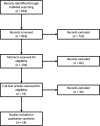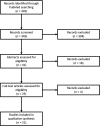Infectious and immunogenetic factors in bipolar disorder
- PMID: 28832904
- PMCID: PMC7159344
- DOI: 10.1111/acps.12791
Infectious and immunogenetic factors in bipolar disorder
Abstract
Objective: Despite the evidence supporting the association between infection and bipolar disorder (BD), the genetic vulnerability that mediates its effects has yet to be clarified. A genetic origin for the immune imbalance observed in BD, possibly involved in the mechanisms of pathogen escape, has, however, been suggested in recent studies.
Method: Here, we present a critical review based on a systematic literature search of articles published until December 2016 on the association between BD and infectious/immunogenetic factors.
Results: We provide evidence suggesting that infectious insults could act as triggers of maladaptive immune responses in BD and that immunogenetic vulnerability may amplify the effects of such environmental risk factors, increasing susceptibility to subsequent environmental encounters. Quality of evidence was generally impaired by scarce attempt of replication, small sample sizes and lack of high-quality environmental measures.
Conclusion: Infection has emerged as a potential preventable cause of morbidity in BD, urging the need to better investigate components of the host-pathogen interaction in patients and at-risk subjects, and thus opening the way to novel therapeutic opportunities.
Keywords: bipolar disorder; immunogenetics; infection; inflammation.
© 2017 John Wiley & Sons A/S. Published by John Wiley & Sons Ltd.
Figures



Similar articles
-
Toxoplasma gondii exposure may modulate the influence of TLR2 genetic variation on bipolar disorder: a gene-environment interaction study.Int J Bipolar Disord. 2016 Dec;4(1):11. doi: 10.1186/s40345-016-0052-6. Epub 2016 May 20. Int J Bipolar Disord. 2016. PMID: 27207565 Free PMC article.
-
Is it time for immunopsychiatry in psychotic disorders?Psychopharmacology (Berl). 2016 May;233(9):1651-60. doi: 10.1007/s00213-016-4266-1. Epub 2016 Mar 18. Psychopharmacology (Berl). 2016. PMID: 26988846 Review.
-
Cytokines in bipolar disorder: paving the way for neuroprogression.Neural Plast. 2014;2014:360481. doi: 10.1155/2014/360481. Epub 2014 Sep 9. Neural Plast. 2014. PMID: 25313338 Free PMC article. Review.
-
Cognitive deficits in bipolar disorders: Implications for emotion.Clin Psychol Rev. 2018 Feb;59:126-136. doi: 10.1016/j.cpr.2017.11.006. Epub 2017 Nov 21. Clin Psychol Rev. 2018. PMID: 29195773 Free PMC article. Review.
-
TRPM2 variants and bipolar disorder risk: confirmation in a family-based association study.Bipolar Disord. 2009 Feb;11(1):1-10. doi: 10.1111/j.1399-5618.2008.00655.x. Bipolar Disord. 2009. PMID: 19133961
Cited by
-
T cells: an emerging cast of roles in bipolar disorder.Transl Psychiatry. 2023 May 8;13(1):153. doi: 10.1038/s41398-023-02445-y. Transl Psychiatry. 2023. PMID: 37156764 Free PMC article. Review.
-
Virus-Induced Maternal Immune Activation as an Environmental Factor in the Etiology of Autism and Schizophrenia.Front Neurosci. 2022 Apr 12;16:834058. doi: 10.3389/fnins.2022.834058. eCollection 2022. Front Neurosci. 2022. PMID: 35495047 Free PMC article. Review.
-
Schizophrenia, Human Leukocyte Antigen (HLA), and Herpes Viruses: Immunogenetic Associations at the Population Level.Neurosci Insights. 2023 Apr 14;18:26331055231166411. doi: 10.1177/26331055231166411. eCollection 2023. Neurosci Insights. 2023. PMID: 37077512 Free PMC article.
-
Integrating human endogenous retroviruses into transcriptome-wide association studies highlights novel risk factors for major psychiatric conditions.Nat Commun. 2024 May 22;15(1):3803. doi: 10.1038/s41467-024-48153-z. Nat Commun. 2024. PMID: 38778015 Free PMC article.
-
Multiple morbidities are associated with serious infections in patients with rheumatoid arthritis.Semin Arthritis Rheum. 2024 Apr;65:152386. doi: 10.1016/j.semarthrit.2024.152386. Epub 2024 Jan 15. Semin Arthritis Rheum. 2024. PMID: 38244447 Free PMC article.
References
-
- Marangoni C, Hernandez M, Faedda GL. The role of environmental exposures as risk factors for bipolar disorder: a systematic review of longitudinal studies. J Affect Disord 2016;193:165–174. - PubMed
-
- Leboyer M, Oliveira J, Tamouza R, Groc L. Is it time for immunopsychiatry in psychotic disorders? Psychopharmacology 2016;233:1651–1660. - PubMed
Publication types
MeSH terms
LinkOut - more resources
Full Text Sources
Other Literature Sources
Medical

